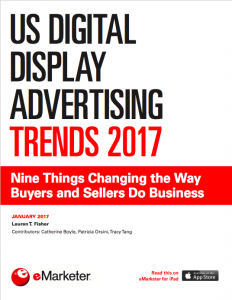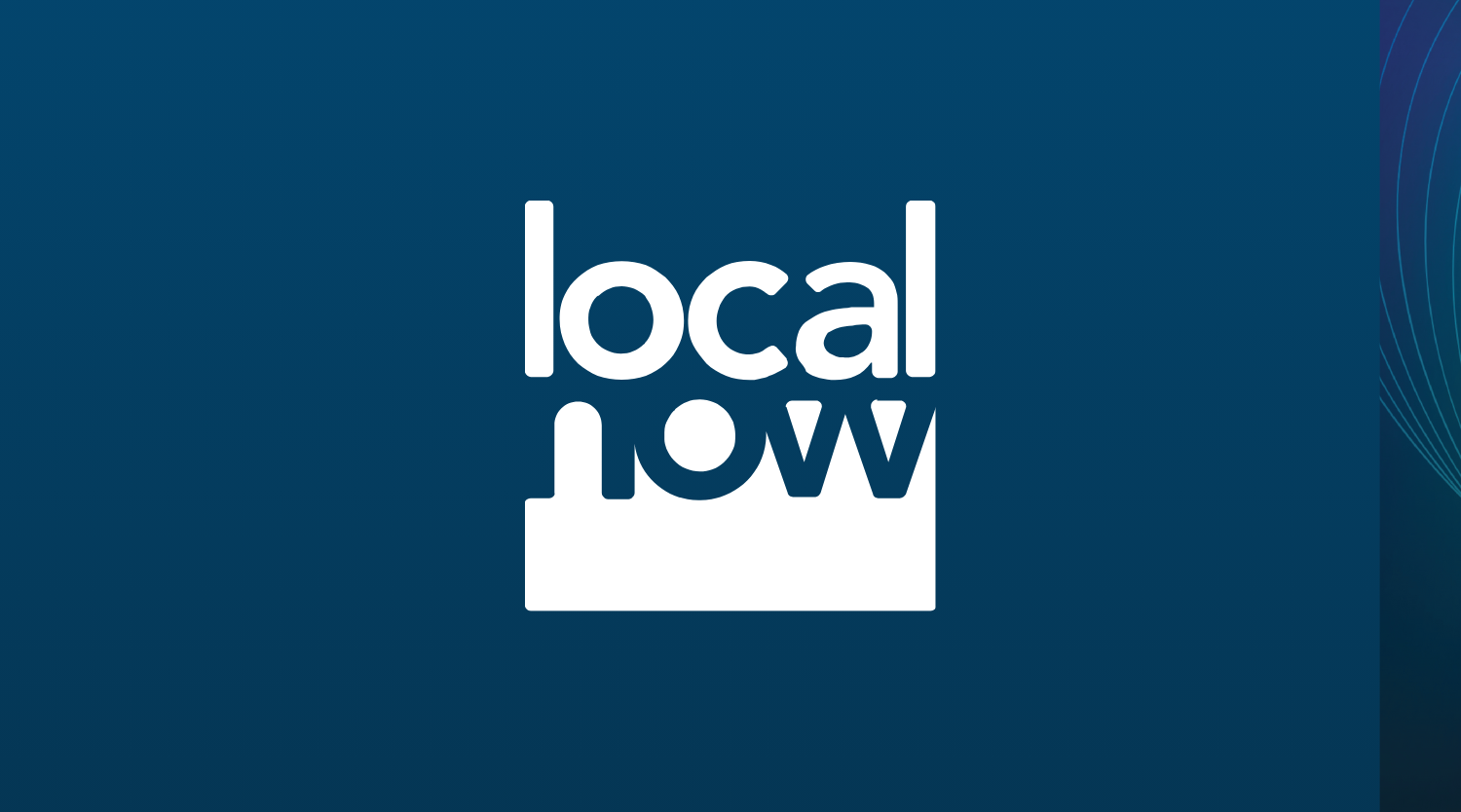Recently, eMarketer released its annual US Digital Display Advertising Trends 2017 report, which asserts that digital display will see new areas of innovation despite frustrations around a variety of ongoing issues, including concerns over transparency and measurement.
Based on interviews conducted with innovators and thought leaders from the digital media and advertising technology industries, including Tremor Video CMO Jen Catto; MediaMath VP of Product Strategy & Scaled Media Jed Nahum; Adelphic Mobile CEO Michael Collins, and PubMatic President Kirk McDonald, among others, eMarketer’s US Digital Display Advertising report identifies nine of the most important trends expected to impact the way that digital media buyers and sellers do business in 2017.
 In the interest of time, we’ve highlighted four key takeaways from the report below that we believe should be of particular interest to programmatic media buyers and sellers, not the least of which is the continued dominance of the Google-Facebook duopoly, the evolution and growing importance of video and native, and the shifting discussion around transparency and value.
In the interest of time, we’ve highlighted four key takeaways from the report below that we believe should be of particular interest to programmatic media buyers and sellers, not the least of which is the continued dominance of the Google-Facebook duopoly, the evolution and growing importance of video and native, and the shifting discussion around transparency and value.
- VIDEO WILL CONTINUE TO BUILD, NATIVE TO MATURE
2017 is expected to be a significant year for video and native display advertising. According to eMarketer, video and rich media growth will continue to outpace banners and sponsorships through 2020, at which point the two categories will account for a combined 57.9 percent of total digital display ad dollars.
Native, on the other hand, is expected to see added interest from buyers and sellers as they look for more engaging ad formats that consumers will be less likely to block. As of May of 2016, 47 percent of US marketers and agencies using native advertising utilized programmatic, according to a poll conducted by Advertiser Perceptions.
As interest in the native format grows, eMarketer expects clear classifications between programmatic and non-programmatic to emerge as the ability to scale native in addressed more aggressively.
- PROGRAMMATIC WILL UNLOCK MORE POWER FOR PUBLISHERS
In 2016, header bidding gained traction as a viable way to add incremental revenue by shifting the priority of the programmatic channel within the ad decisioning process, leading many more publishers to realize programmatic’s potential as more than a secondary monetization strategy.
In fact, when asked about the main benefits from header bidding, 48 percent of US publishers reported higher CPMs, followed by increased yield (31 percent) and fewer passbacks (23 percent), according to Digiday poll released in August 2016.
Over the next twelve months, publishers will continue to reap the benefits of advanced ad decisioning tactics, as Kirk McDonald, president of PubMatic, told eMarketer: “Publishers have taken a big leap forward in that their data is getting better and [… they] are now more successfully retaking control from the overdependence they’ve had on Google in the past thanks to the emergence of header bidding.”
In 2017, US programmatic digital display advertising is expected to reach $31.87 billion, accounting for 78 percent of all digital display ad spending, and header bidding won’t be the only way programmatic will drive higher CPMs for publishers this year.
eMarketer expects that two other important programmatic channels, private marketplace and programmatic direct, combined will account for 73.1 percent of all US programmatic digital display spending this year, and to account for 76.2 percent by 2018.
- WALLED GARDENS AND THE BIG DUOPOLY REACH A TIPPING POINT

“Facebook and Google are not villains for running smart businesses,” PubMatic President Kirk McDonald wrote in an article for The Drum in advance of the 2016 Dmexco conference. “However, more choice has always been an important pillar to drive innovation and healthy business growth. We need more support and adoption of independent, credible, scalable technology that supports a healthy competitive alternative for publishers and marketers.”
eMarketer’s US Digital Display report echoes these sentiments, highlighting two key trends around the Facebook-Google duopoly and dominance of walled gardens in our industry: first, although buyers may not like the rules for sharing data and allowing third-party measurement that these two media giants impose upon them, they will continue to give Facebook and Google large portions of their advertising budgets; and second, the increasing pressure being put on walled gardens by the rest of the industry will have material impact in 2017, and the walls of these closed ecosystems will begin to crumble.
As eMarketer asserts, pressures are mounting on multiple fronts—the desire for basic audience measurements like frequency caps means that brands are beginning to demand methods for identifying audiences across all properties, not just the open ones.
Despite the growing skepticism of at least some of the platforms that self-report metrics and ad verification, net US digital display ad revenues for Facebook and Google are expected to grow faster than that of any other companies this year—27.3 percent and 9.9 percent, respectively—making this an issue that will remain at the forefront of discussions throughout 2017.
- THE TRUE VALUE OF MEDIA: MOVING AWAY FROM TRANSPARENCY
“Transparency” was voted the marketing word of the year for 2016 by the members of the Association of National Advertisers (ANA)—just one indication of the importance of the topic in our industry.
“The word ‘transparency’ is really code for something else,” PubMatic President Kirk McDonald told eMarketer. “It’s code for ‘Am I getting value in what I’m buying?’ Meaning, is the price worth what it’s supposed to be? Did you get or not get fraud? Are the fees that are being paid correct? We use the word ‘transparency,’ but it’s really a value issue.”

Michael Collins, CEO of Adelphic Mobile, agrees: “You’re now seeing clients wanting to take control of platforms and software themselves. There is going to be a very significant realignment as to the role of what’s done by the brand and what’s done by the agency, and how the agencies interact with clients and if they are able to make money and drive innovation like they have in the past.”
This is a conversation that we expect to continue and evolve during 2017.
For the complete set of trends from eMarketer, you can access the report on the eMarketer website, or listen to analyst Lauren Fisher as she highlights some of the key findings in a recent episode of eMarketer’s “Behind the Numbers” podcast, “How Native Advertising Will Change in 2017,” available on SoundCloud.





